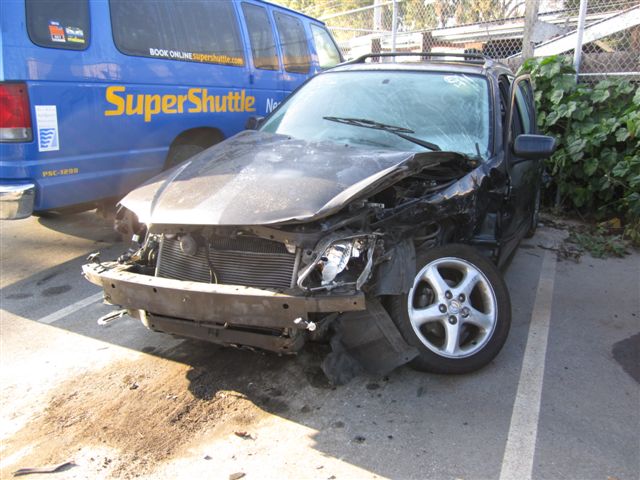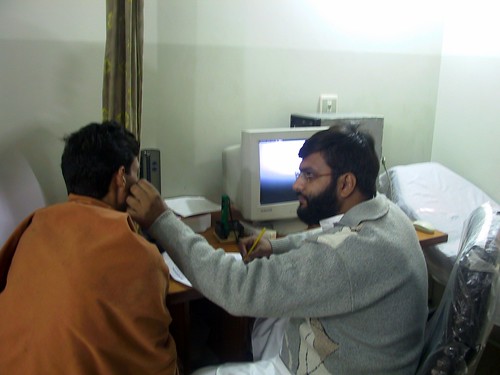In my first post of this series, Mission-Related Investing for the Rest of Us, I contemplated the challenge of how my personal investments could better reflect my values. Some recent classes and books have encouraged me to think about the “social returns” my investments could be earning instead of focusing exclusively on financial returns.
To show how my thinking is changing, I need to start with what it was before.
My Background
I’m a “rational” and somewhat informed investor. I was part of the Investment Club learning about the stock market in middle school, have subscribed to BusinessWeek nearly continuously and Forbes occasionally. I took a course on investment strategies as part of my Masters in Industrial Engineering / Engineering Management. I have friends who work in finance and occasionally recommend books or share ideas (I’d heard of CDO’s well before they became mainstream media news.) I spent a year learning about microfinance and talking with bankers and non-profits about their operations.
I’m more of a do-it-yourself investor. Although I’m not prepared to spend much of my time managing investments, I’m also leery of paying the high rates for someone else to manage my money for me, knowing that most advisors fail to match the averages, especially when fees are included. This combination translates into making me a “Buy and Hold” investor. One of the dangers of this investing style is that you have to be committed about holding, and not bail out because “everything is dropping!” That’s a sure-fire way to “Sell Low.” Friends cited the Warren Buffett advice: “Be fearful when others are greedy, and be greedy when others are fearful.” (from his 2007 Annual Shareholders Letter) If you don’t have the temperament to follow your disciplined strategy, then having a manager do it for you can be a solution. But that’s a very different style manager than an active trader or one who calls you up with a “hot tip.”
My career as a high-tech entrepreneur and consultant tends to have more earnings volatility than average, so I compensate by being more conservative in my investments. (Or maybe I’m just more risk-averse than I like to admit.)
Efficient Markets
To a first approximation, I believe in the Efficient Market Hypothesis: that is, people (especially investing professionals) have access to the same (or more) information, and have done the analysis, so if there were a serious mis-pricing (stock being under- or over-valued) they would buy and sell it to make the profit, and drive the stock to its “correct” price. So, although there is random variation in prices (e.g., due to unexpected events in the market place), as new information becomes available, it gets absorbed quickly, with the prices adjusting accordingly. A small, part-time, retail investor like myself is not going to get rich off seeing something that the full-time experts missed.
Blending Stocks with Bonds
Just as individual stocks are subject to random variation, the stock market also has a random component to it, and there are some years where the value will be down, say, 20%. People with a strong stomach, investing over a long time horizon, can ride that out and wait until things come back, but people with a shorter time horizon can’t, and keeping a portion of your investment portfolio in a more stable investment, like bonds, yields greater stability at a (small) cost in total return.
Secure “Emergency Fund”
There’s also the need to have an emergency fund (6 months of expenses, at least) in a secure, liquid source should one have an unexpected change in job situation, health, etc.
Putting it all together
So, recapping, at a high level we have:
- Stable, secure, liquid source for necessary living expenses: savings / checking account, money market account, CD’s
- Invested broadly in the stock market: stocks, equity mutual funds or ETFs
- Fixed income/bonds: individual bonds, bond mutual funds or ETFs
[Note: I’m not a home-owner, but for many people, their house is their most significant investment. It shares characteristics of an equity investment: expected appreciation over the long term, subject to dips and potentially long stretches to recover value if purchased at the top of a bubble.]
The mix that you have of these 3 asset classes (stocks, bonds, cash) determine the amount of risk you are taking (the higher the percentage of stocks, the more risk), and also the rate of return you are hoping to achieve. The next 3 posts will deal with each of these asset classes, and how you can find alternatives that provide a mission-related return as well as the financial one.






